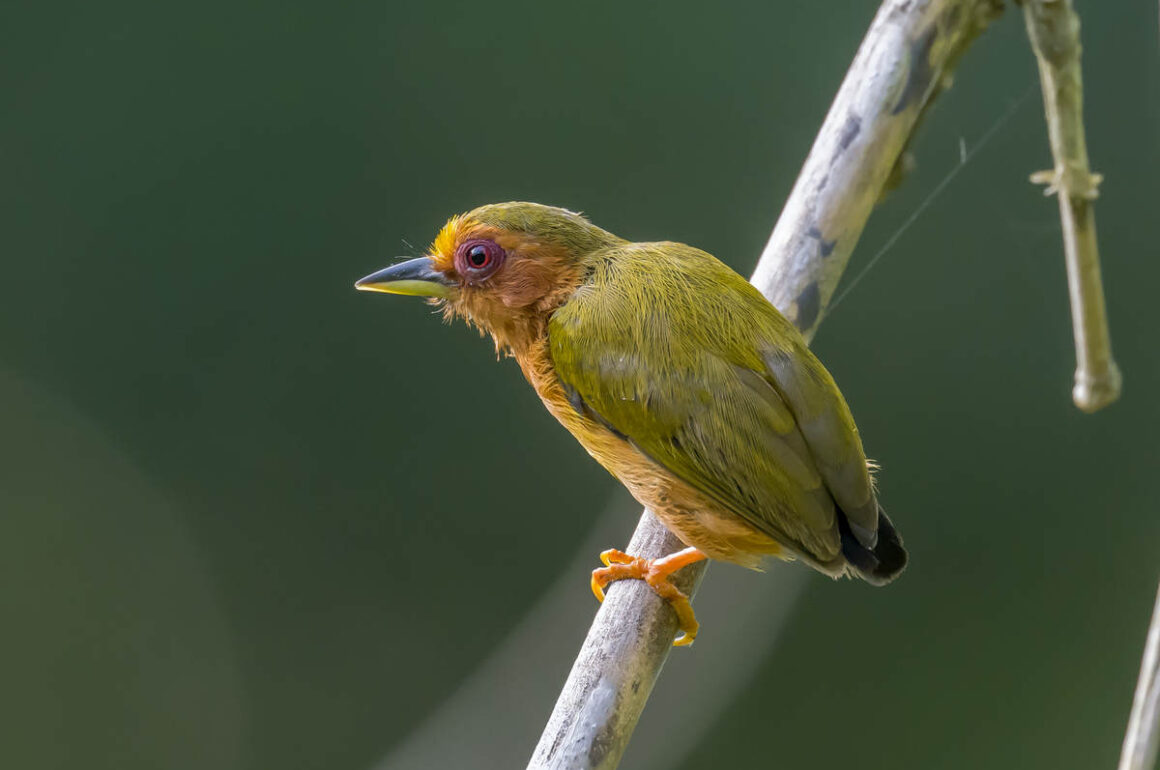
Sepilok is one of the best places I ever spent time birding at – I did so for a week and could have easily spent more time there. So, in order to economize a bit, the Sepilok birds are described in three separate posts.
The Ashy Tailorbird is a good example of the different perspectives of describing a bird – while the English name focuses on the body of the bird, the Latin species name ruficeps refers to the rufous head.
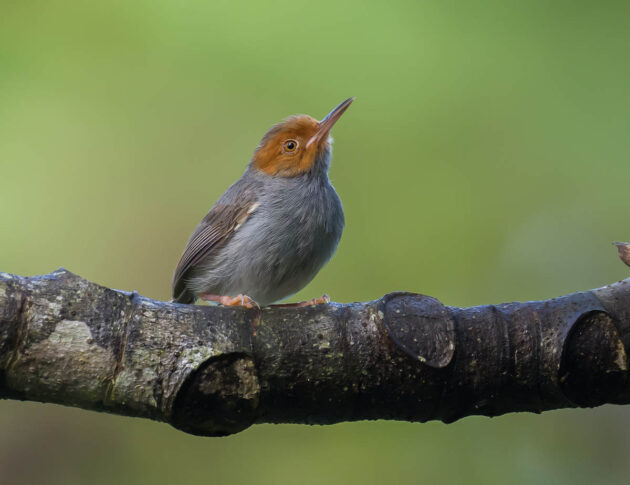
While these photos are peaceful enough, a paper on the predation of an Ashy Tailorbird by a paradise gliding snake has more dramatic illustrations. Viewer discretion is advised, particularly if you look at the paper in the company of Ashy Tailorbird chicks.
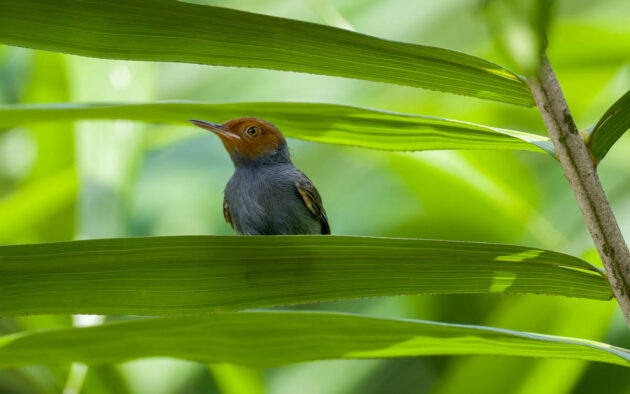
In contrast, a paper on the foraging behavior of two tailorbird species (including the Ashy Tailorbird) makes for a more peaceful reading, which is a polite way of saying that I found it slightly boring. I guess the gratuitous violence in the other paper is more appealing.
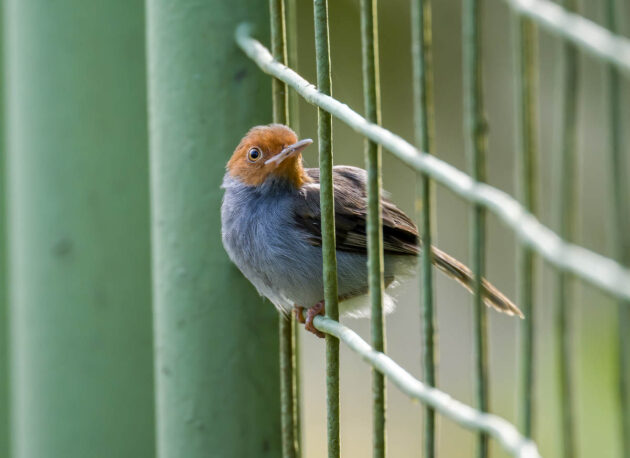
Apparently, there are 12 species of babblers at Sepilok – I only saw three of them, partly due to their characteristics (they usually stay close to the ground and prefer colors such as gray, brown, or black to those colors seemingly worn by amateur cyclists today [which I take as proof for my theory that most of these cyclists must be color blind]) and partly because I am not a very good birder. (I just re-read the last sentence, found it a bit confusing but eventually decided to leave it unchanged – after all, it is you who has to read it, not me).
Anyway, one of the babblers of Sepilok is the Bornean Black-capped Babbler – the result of a split of the Black-capped Babbler (well, at least from a human perspective – the birds themselves are probably quite nonchalant about it). As the split only happened in 2021, it will probably take at least five more years for the online version of the HBW to create a separate species page for this babbler. Maybe the HBW should be administered by a university with a stronger interest in birds than Cornell.
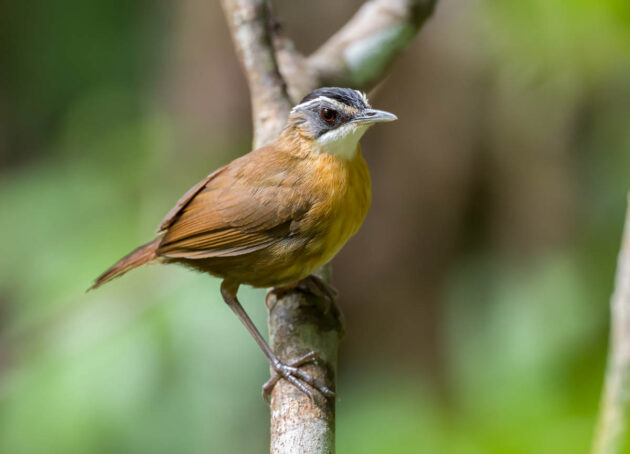
The split makes the bird one of the six species endemic to Sabah, Borneo (source), four of which I saw during my week at Sepilok.
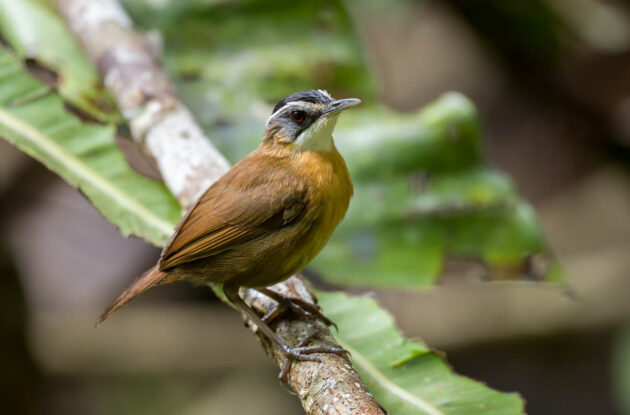
The Short-tailed Babbler is classified as Near Threatened. eBird highlights its “almost nonexistent stump for a tail” but then the writer of this description most likely has no tail at all.
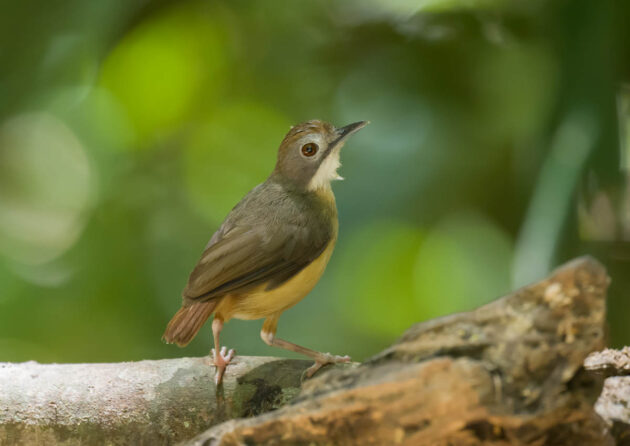
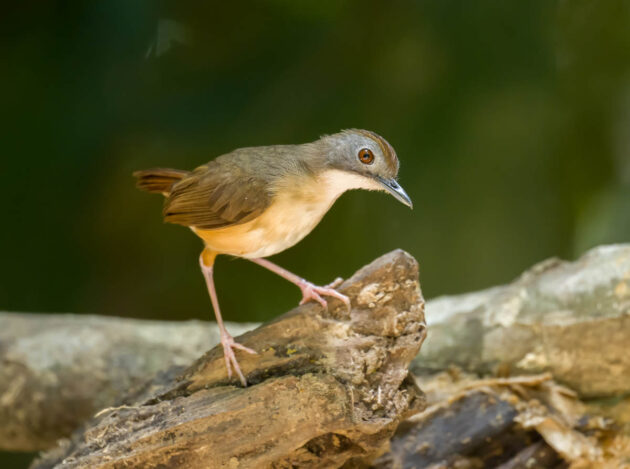
I got along fairly well with the Short-tailed Babblers at Sepilok as according to eBird, they are “not as social as other forest babblers”. So we agreed that I just take a few photos of them, then we went our separate ways, none of the usual round of drinks after a photo shooting that seems to be almost compulsory when dealing with most other babbler species.
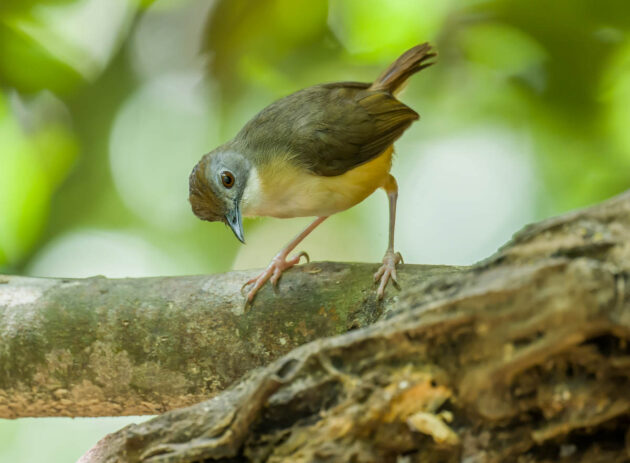
The most interesting feature of the Chestnut-winged Babbler is the presence of blue skin patches (though I am afraid that my photos do not fully do them justice). A paper discusses the function of these patches, hypothesizing that “blue facial skin functions as a visual signal in sexual communication for a number of species, possibly as an indicator of fitness”. Maybe this is also where the colorful clothes of the cyclists have their origin?
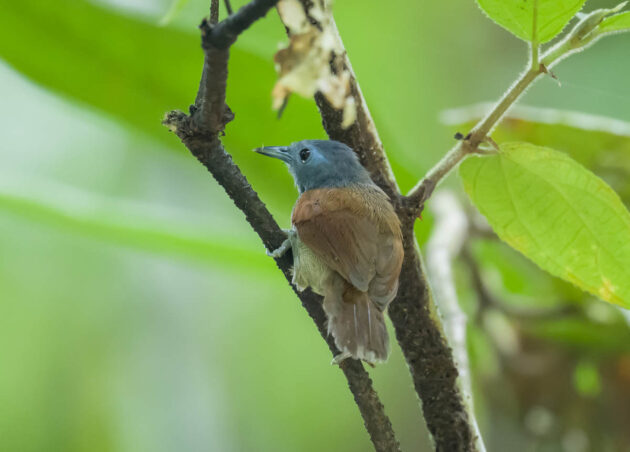
The paper cites the example of the Blue-footed Booby: Its foot color becomes duller when the birds are malnourished. If the male’s color fades after the first egg, the female reacts by laying a smaller second egg – seemingly deciding that it is better to cut her losses as the male apparently is the avian equivalent of a deadbeat father.
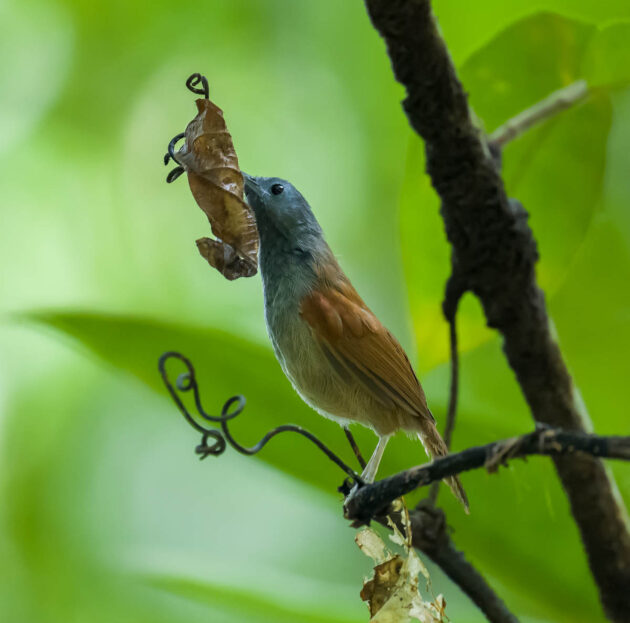
The Chestnut-winged Babbler is known as one of the host species of the Asian Drongo-cuckoo in Southeast Asia (source), a claim to fame that most bird species would probably prefer to avoid. But maybe bringing up a cuckoo brings good karma, who knows …
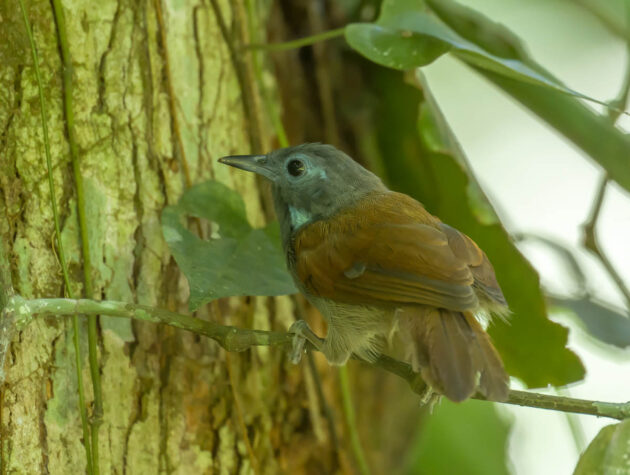
After the initial posting, Andrew Bailey informed me that after a split, the babbler above is now Grey-hooded Babbler. My excuses are that the two species look very similar, and that I am not a good birder.
The two most easily seen pittas of Sepilok were already discussed in an earlier post – the Hooded Pitta …
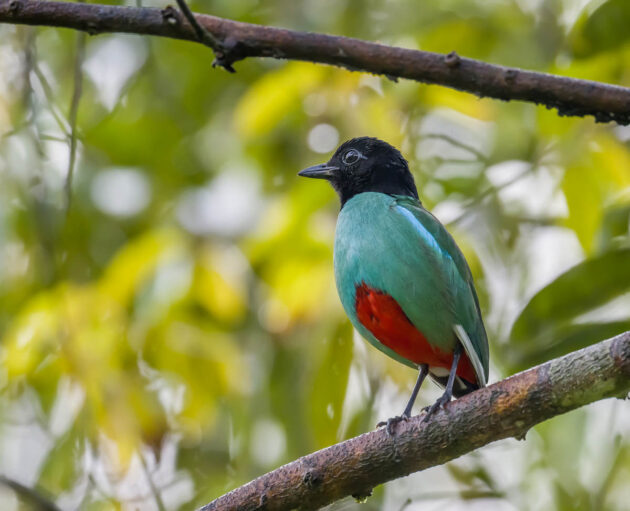
… and the Black-crowned Pitta (another Sabah endemic).
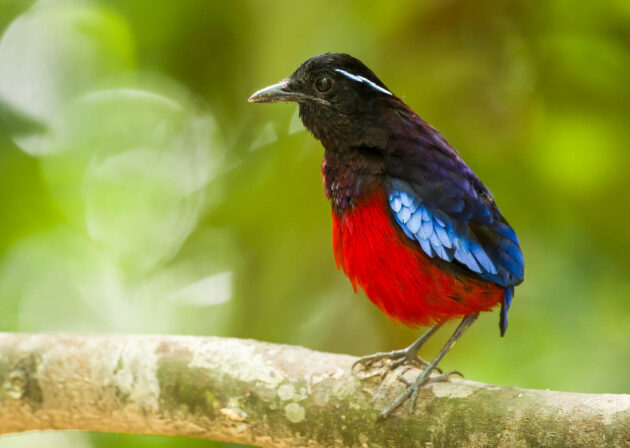
While monarchies and monarchs should be abolished everywhere in the world (note to the Economist: have some principles in this matter, some backbone!), the Black-naped Monarch should not.
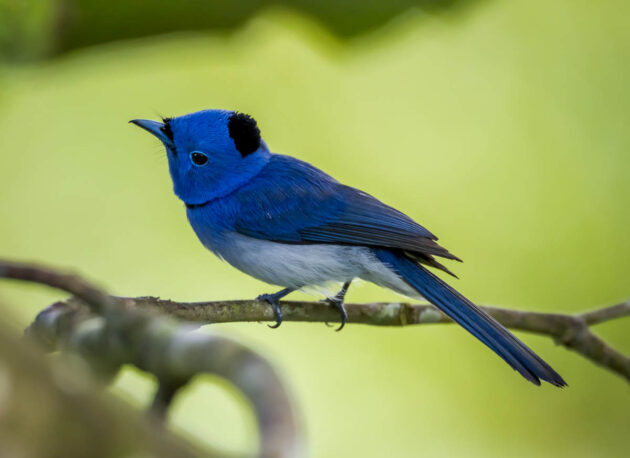
But then, the Black-naped Monarch has never claimed to reign by divine right, nor has it ever been responsible for large-scale wars, slavery, colonialism, etc. (something that the fans of constitutional monarchies seem to forget, focusing instead on the warm and fuzzy feeling of having a monarch as a kind of ersatz father).
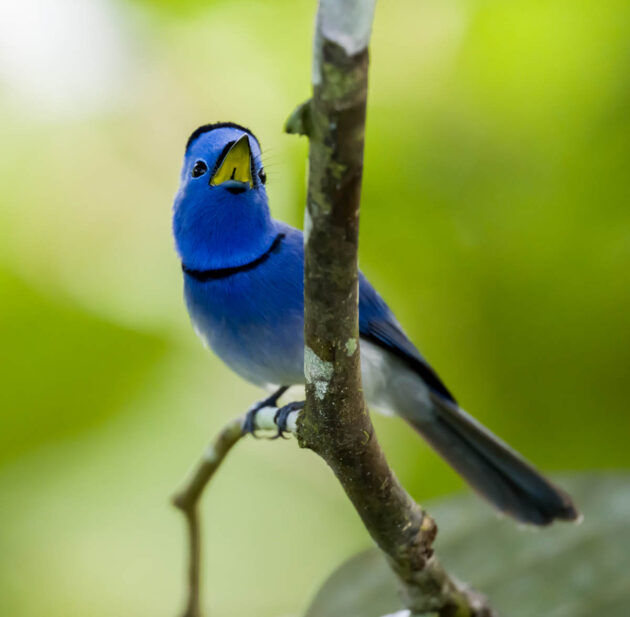
Realizing that in writing about this I am talking (or rather writing) myself in a heartfelt but presumably very boring and self-righteous corner, let’s get back to the poor bird species which is not at fault for being called a monarch. eBird talks of the “beautiful azure-blue male”, which my photos may not fully capture. At the same time – and maybe as compensation for the praise showered on the bird’s appearance – the song is described as “a bland, unremarkable ‘wi-wi-wi-wi-wi-wi-wi.’”
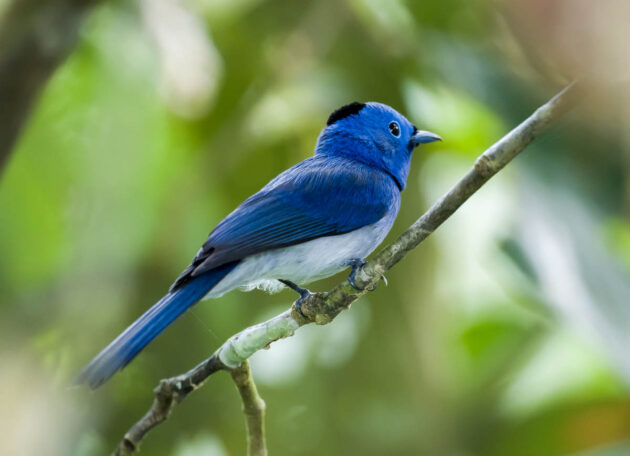
My heart sinks a bit when I am looking for interesting information on a bird species to pass along with my photos, and the only articles I can find are either on the mitochondrial genome of the species (yes, we get it! Yes, you can get that information! Probably without having a single thought while doing it! And you can still get a paper out of it! You can even add three or four of your friends as coauthors – as really nobody knows how much work such a paper is anyway – and hope they might return the favor later) or a paper with a title like “composition of mixed species flocks” or ” survey of avian population at xy” (these papers are really just eBird lists turned into papers) or papers like “first occurrence of bird species xy at location z”. Unfortunately, it seems that the Black-winged Flycatcher-shrike is such a bird.
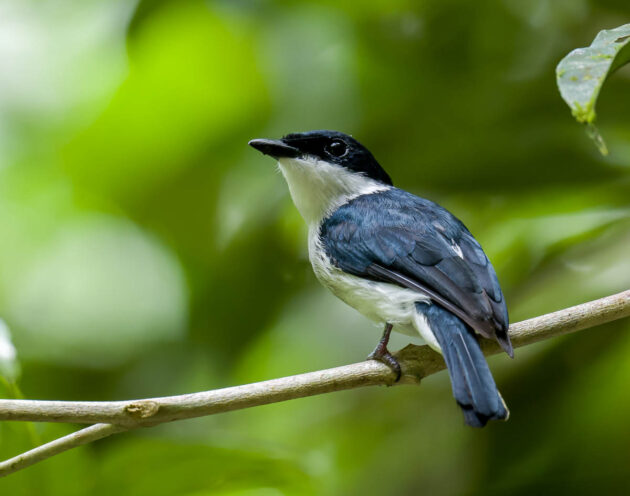
The species name hirundinaceus is a bit strange – it means “swallow-like”, which in terms of color may actually make some sense but apart from that, this is not a bird resembling a swallow.
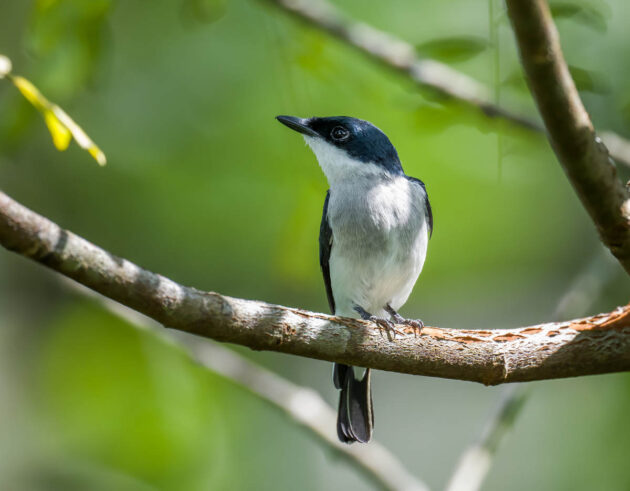
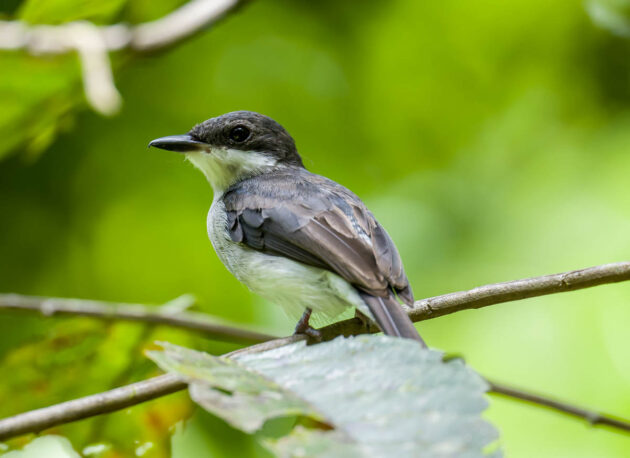
The Bornean Black Magpie lacks the white stripes (also a band name: White Stripes, see here) of the (Malaysian) Black Magpie and is now recognized as a separate species. It is endemic to Borneo.
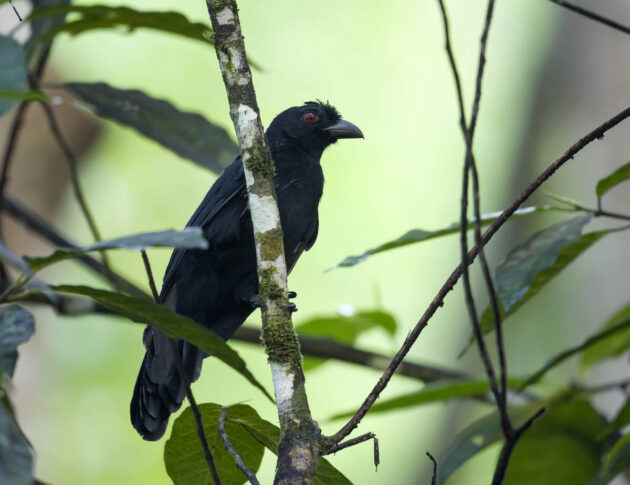
In the scientific literature, the Bornean Black Magpie only makes a very brief cameo appearance – a paper describes a new genus of chewing lice found on the museum specimen of this bird. Why anyone would examine a specimen collected in 1888 for mummified chewing lice is a mystery to me, but so is the appeal of Donald Trump.
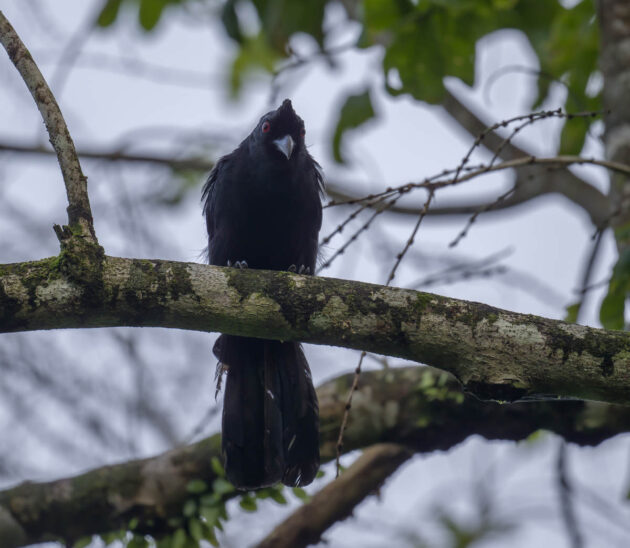
I was expecting to see quite a few barbets in Sabah but eventually only got decent photos of one, the Brown Barbet. Fortunately, barbets are fairly common in Yunnan, China, so it was not a particular disappointment. In fact, this is a rather interesting barbet, meriting the eBird description as a “unique, strange-looking barbet with a massive bill and bright red legs”.
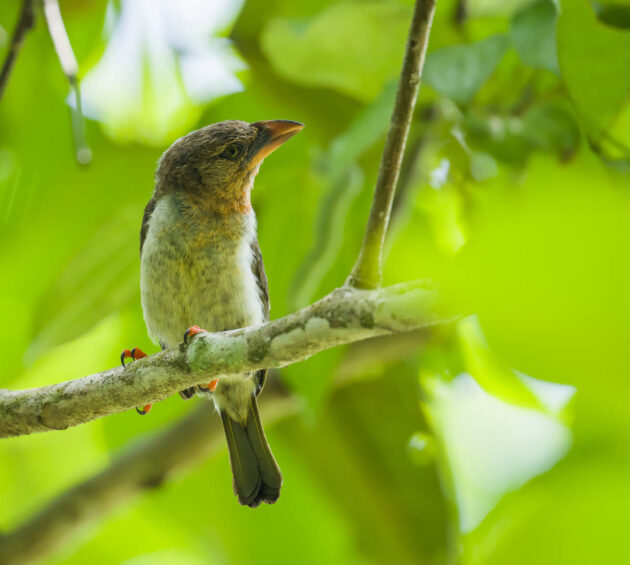
Given the color of the bill (brown, not black), this should be a female.
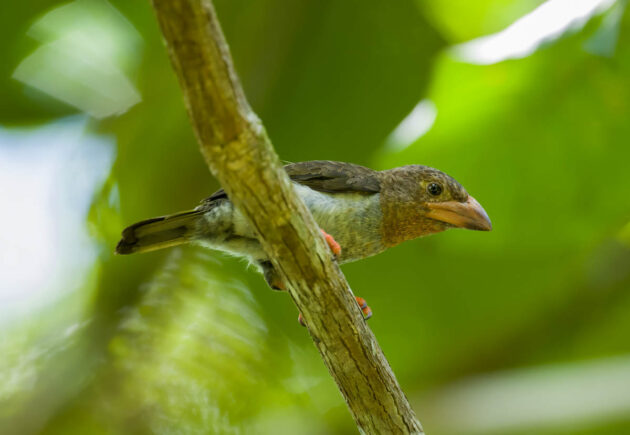
I did not find a single paper specifically covering this species – just a few casual mentions in papers with titles such as “Elevational distribution patterns of understorey forest bird in Western Sarawak, Malaysian Borneo”. Maybe some of the guys spending so much time on mitochondrial genomes could venture out of their labs and do some fieldwork …
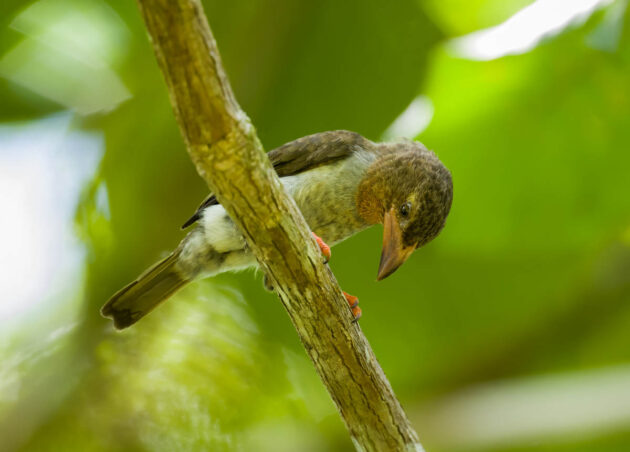
The Java Myna seems to be spreading, potentially crowding out some other myna species such as the …
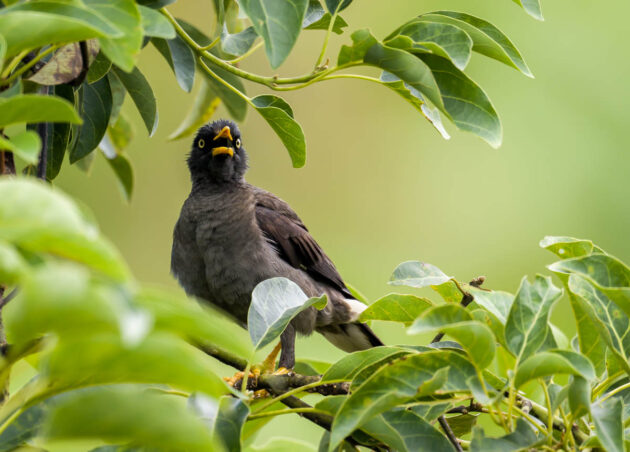
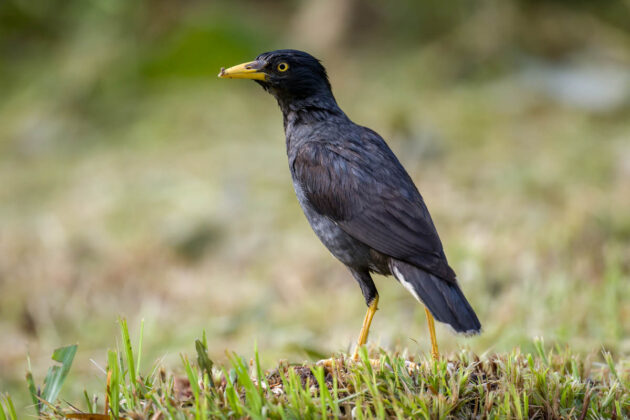
…Common Hill Myna.
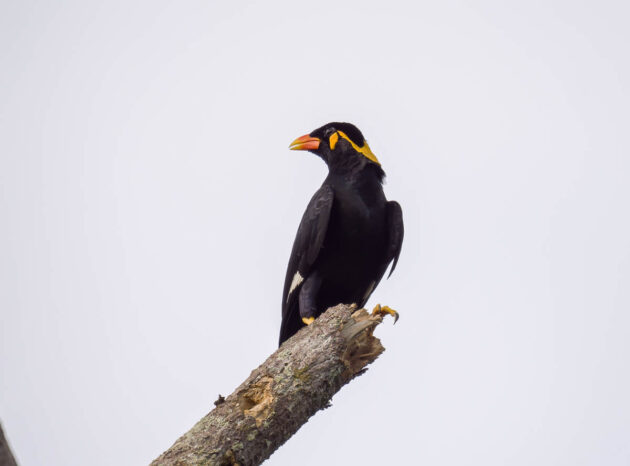
Apparently, the Greater Coucal is associated with some superstitions – in India, seeing one is believed to be auspicious, and in some areas, eating the flesh was regarded to help with illnesses such as tuberculosis.
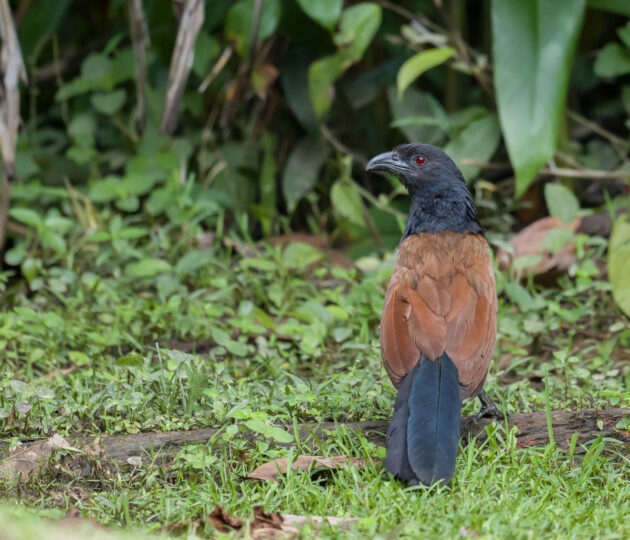
In imperial British India, newcomers to India often mistook the coucal for a pheasant and shot it, only to be disappointed, calling it “evil flavored” later. I think they just got what they deserved.
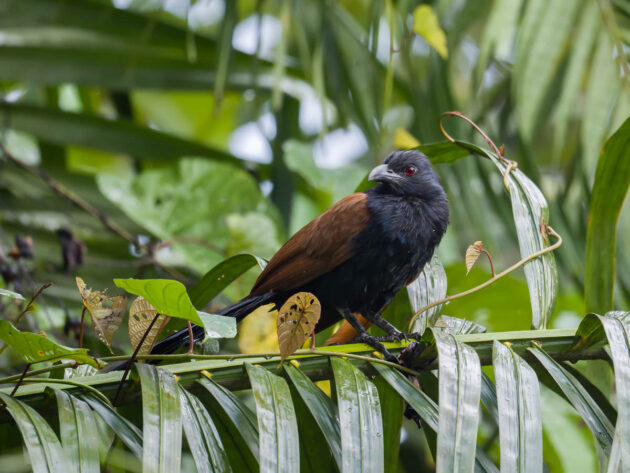
And of course, some Chinese researchers worked on the complete mitochondrial genome of the Greater Coucal. Are these the paper mills one occasionally reads about in relation to Chinese research papers?
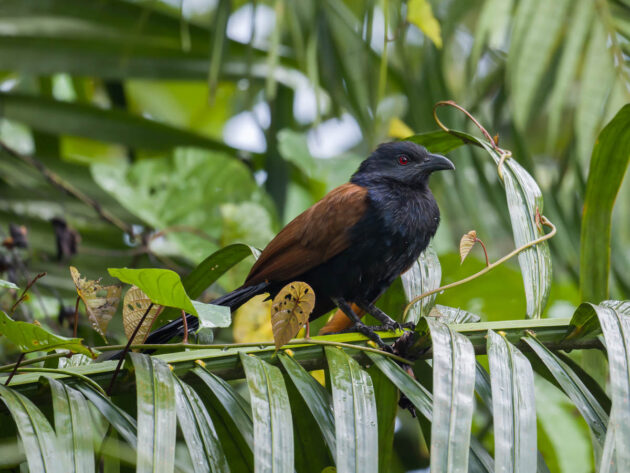
A fairly obscure paper reports on the Greater Coucal feeding on a Common Myna chick. Now, that is what we really want to read about! (“Das ist die Art von Gewalt, die wir sehen wollen. Wenn wir auch nichts spueren wollen”, ‘Los Paul‘, Das Trio).
Sepilok is a good place to see a number of woodpecker species. As among consultants, it is a cardinal rule to always follow some kind of ordering principle, here are five Sepilok woodpeckers in order of size, starting from the smallest one. This size comparison will allow you to easily select the species that best serves all your woodpecker needs.
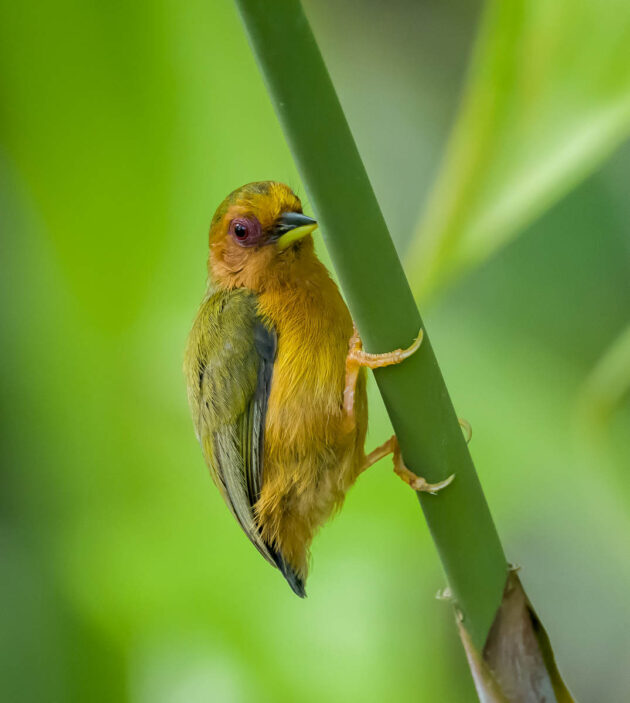
The smallest on offer is the Rufous Piculet (8-9.5 cm).
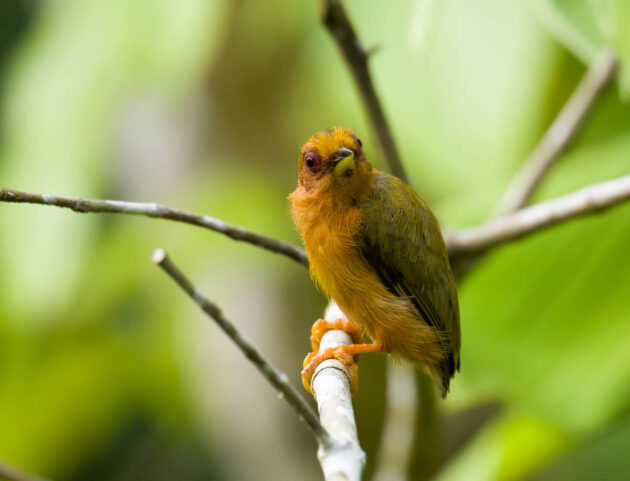
It is clearly the best choice if you like your woodpeckers small – eBird explicitly calls it an “absolutely miniscule woodpecker”
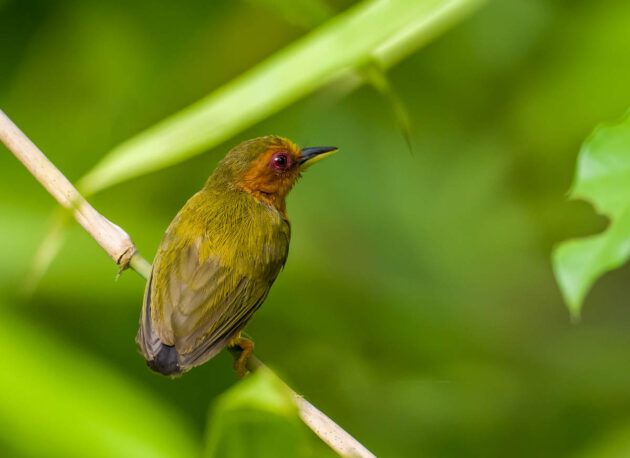
Its scientific species name is abnormis, and indeed it is unusual among the woodpeckers (though it shares this with some other piculets). In fact, John MacKinnon (of “Guide to the Birds of China”) in a recent Shanghai presentation called it “not a real woodpecker at all”, and while he is wrong about that, I sort of see his point.
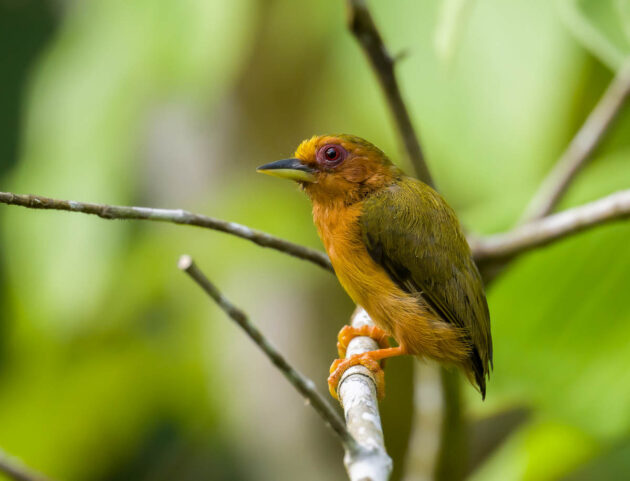
As the bills of piculets are shorter and less dagger-like than those of the other woodpeckers, they re-use woodpecker holes for nesting, rather than making their own holes. Makes them sort of the renters of the woodpecker world rather than homeowners.
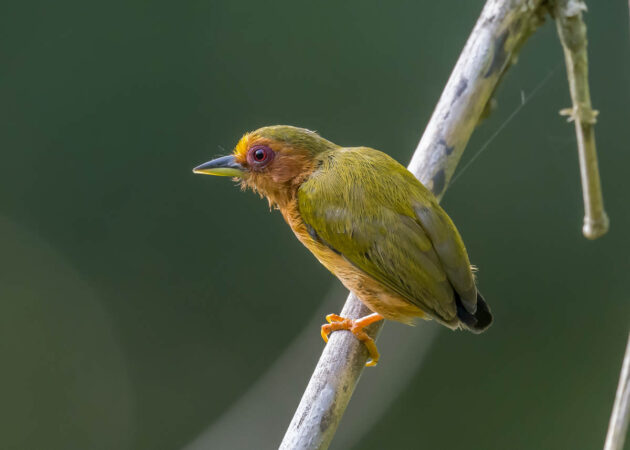
If the piculet is just a little bit too small for you, why not go for the Grey-and-buff Woodpecker (13.5 cm)?
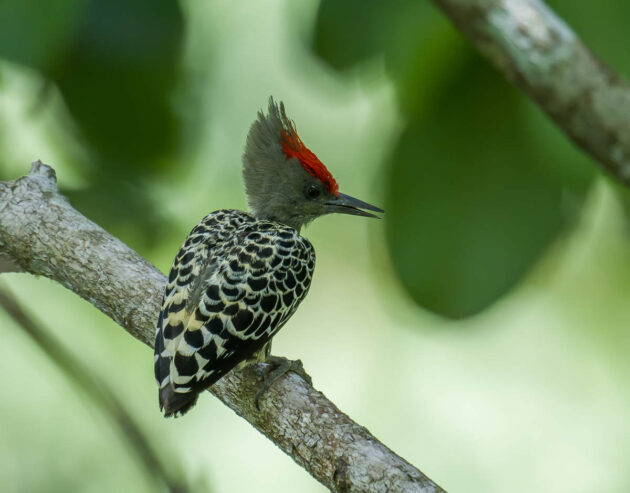
Don’t let the scientific name concretus (large, sturdy, strong) fool you – it is indeed a small woodpecker, but it already fulfills most of the needs of average woodpecker customers.
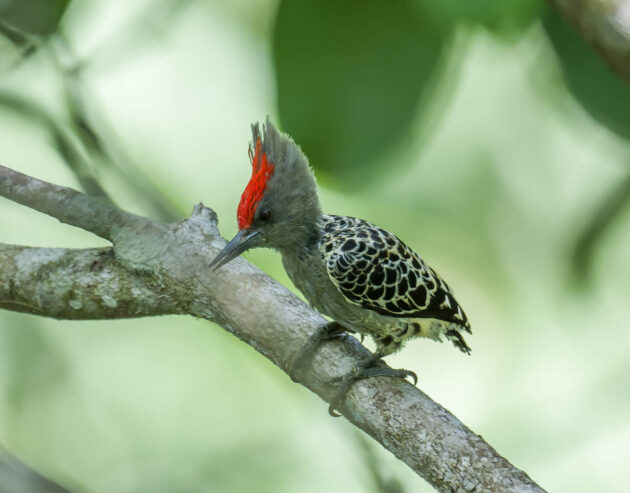
Apparently, this woodpecker has a somewhat unusual roosting behavior, with stable groups of three and four woodpeckers roosting individually in nearby cavities, with many more cavities at the roosting site than woodpeckers. This allows the individual birds to switch cavities every night, and they like this added choice so much that the adult males are even frequently working on the excavation of additional cavities (source).
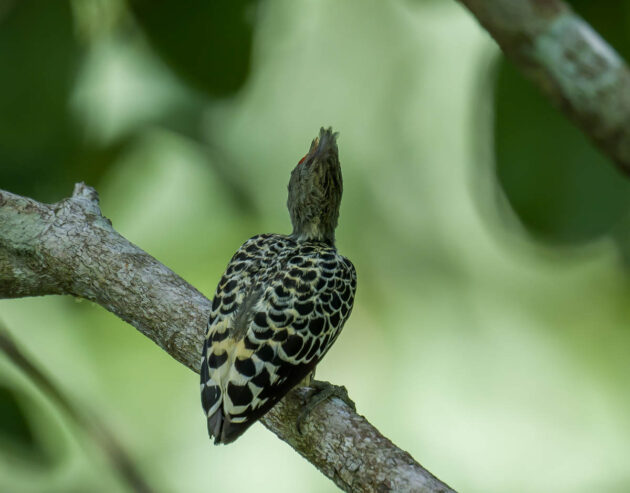
In consumer products, sometimes small sizes are only on offer to make the customer feel better about going for something bigger. In that case, maybe the Banded Woodpecker (23-26 cm) is the right choice as it is right in the middle of the Sepilok woodpecker portfolio and thus a very solid choice for middle-class woodpecker users.
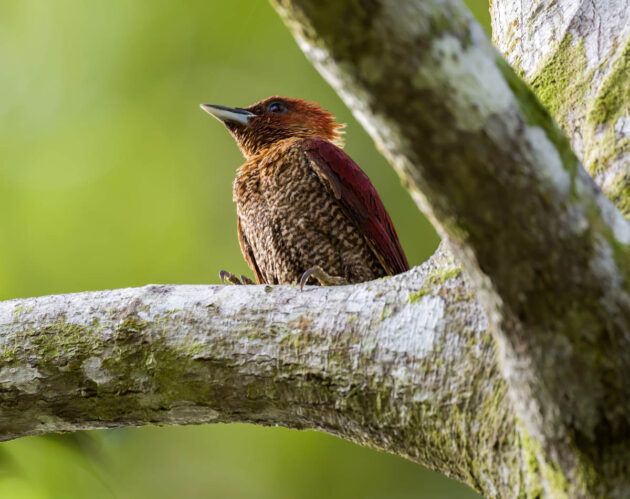
The species apparently tries to get more such users – a scientific paper states that “The Banded Woodpecker (Chrysophlegma miniaceum malaccense) has a ‘classical’ advertising call”.
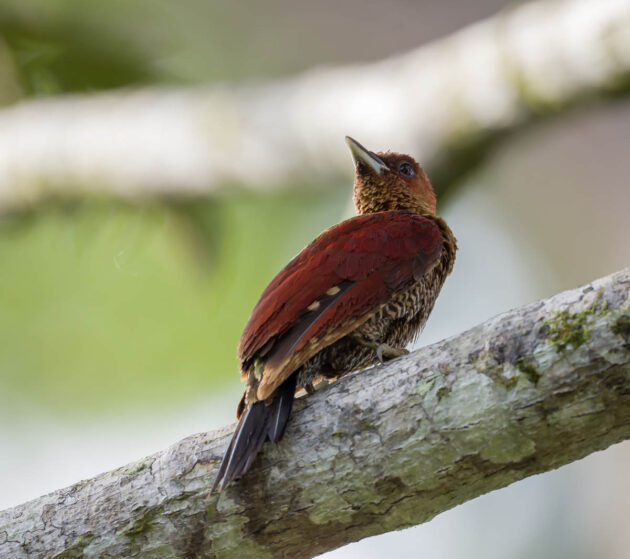
On the other hand, eBird still regards this woodpecker as small, though with an attractive appearance (“small but brightly-colored woodpecker with a spiky crest”).
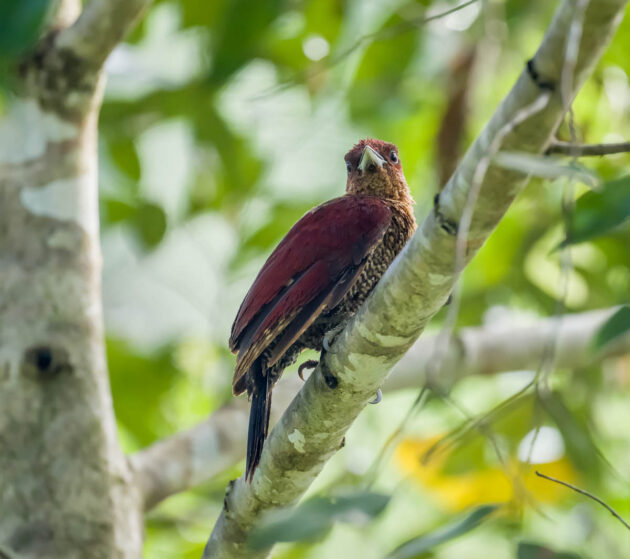
So maybe that size is not enough, and you want something just a little bit bigger, such as the Orange-backed Woodpecker (30 cm)? This species elevates you from those just seeking an average woodpecker to those who demand a bit more from their avian choices.
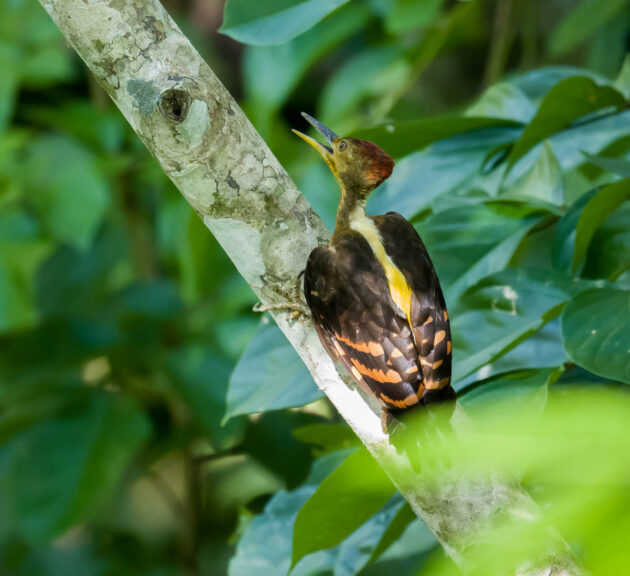
Pleasingly for those opting for this woodpecker, one website already calls it a “fairly large woodpecker” – though to be fair, the HBW calls it “medium-sized”. So, it might just be the right choice for discerning woodpecker users who at the same time want to avoid any hint of being flashy.
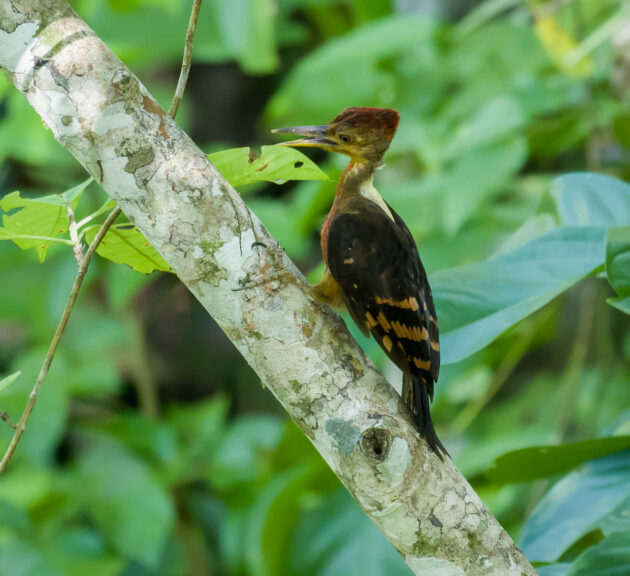
Finally, if you already drive a Porsche and want the neighbors to envy you even in the woodpecker realm, the White-bellied Woodpecker (40-48 cm) is the right one for you. Make your neighbors envy you even more when they read in the HBW that this is a “large to very large woodpecker”!
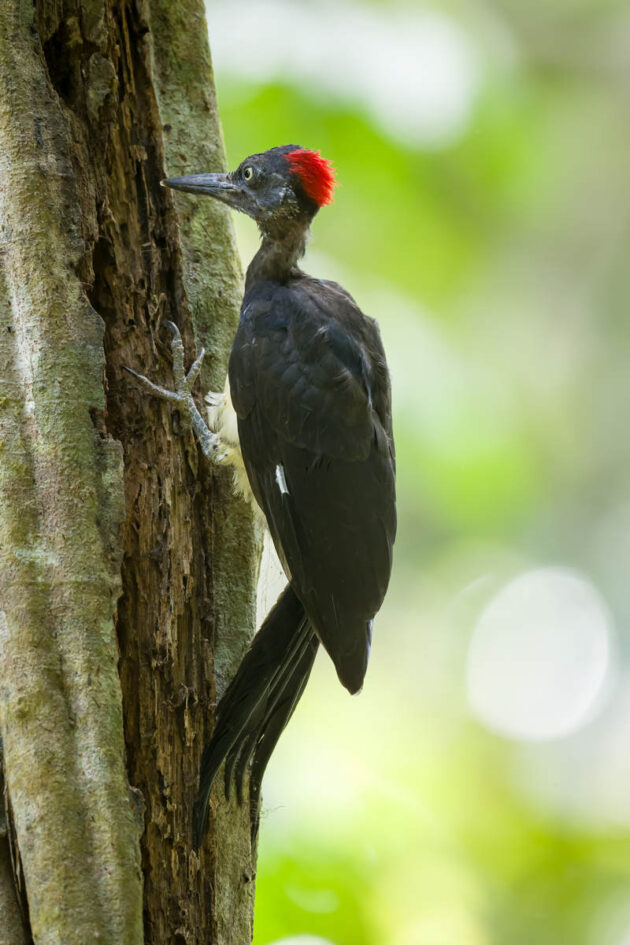
Granted, if you choose this woodpecker, your neighbors may also think of you as a bit of a show-off. But if you already drive a Porsche, this should not really bother you.
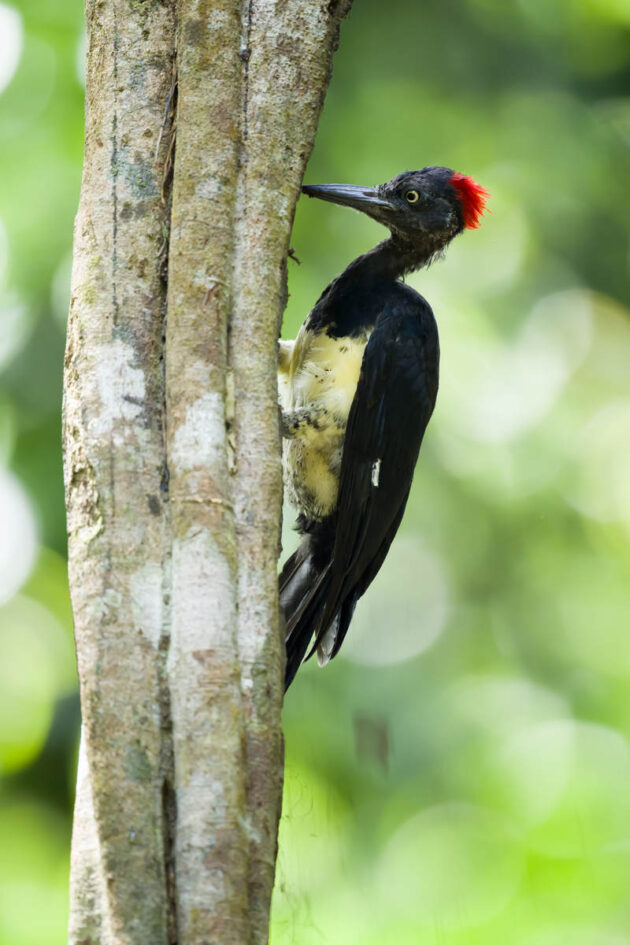
And you can sleep in the safe knowledge that unless your neighbors get either a Black Woodpecker or a Great Slaty Woodpecker, yours will definitely be the biggest in the neighborhood. For some men, such things may be important.

A final advantage of this woodpecker is that with 14 or 15 subspecies (depending on source), it offers lots of options to match your exact woodpecker requirements. And it also comes as a video and yet another video.
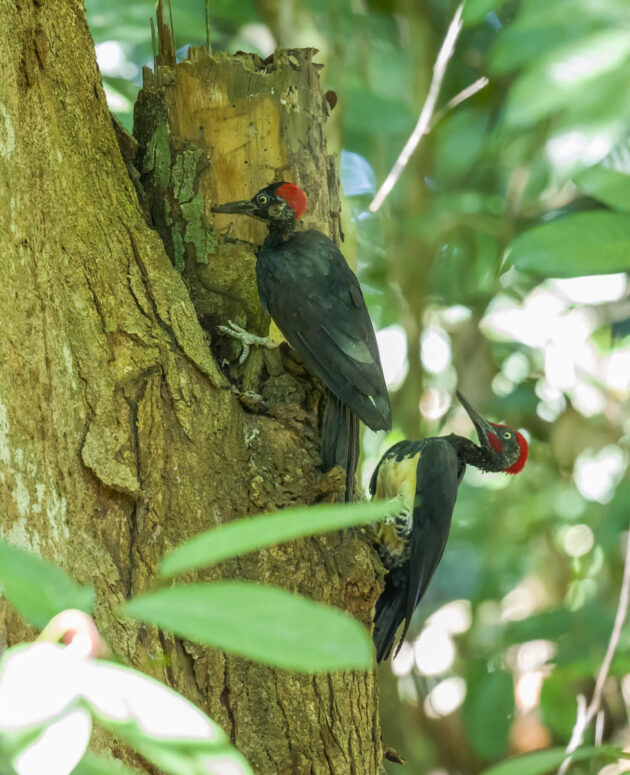
And now for something completely different. The beautiful Red-bearded Bee-eater differs from most other bee-eaters in that it is not a colonial breeder but rather nests solitary or in pairs (source).
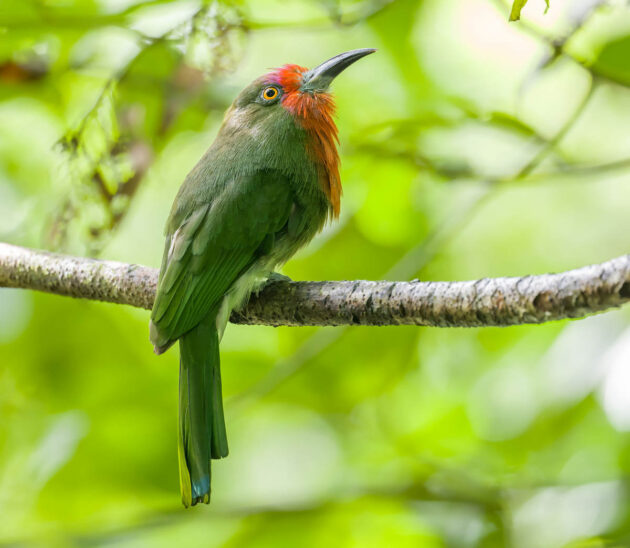
Thus in this case the species name amictus makes sense, as this means unsociable. It also means I have found another soulmate in the avian world.
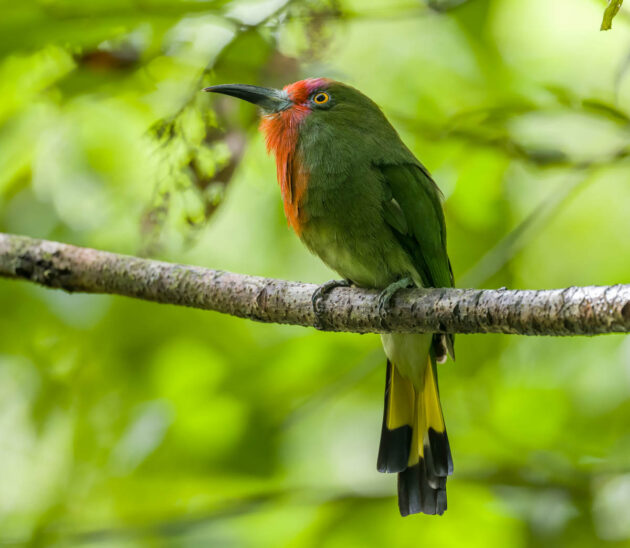
The male and the female Red-bearded Bee-eater look slightly different – the lilac crown of the male extends further and is bigger. So, what you see here is a female.
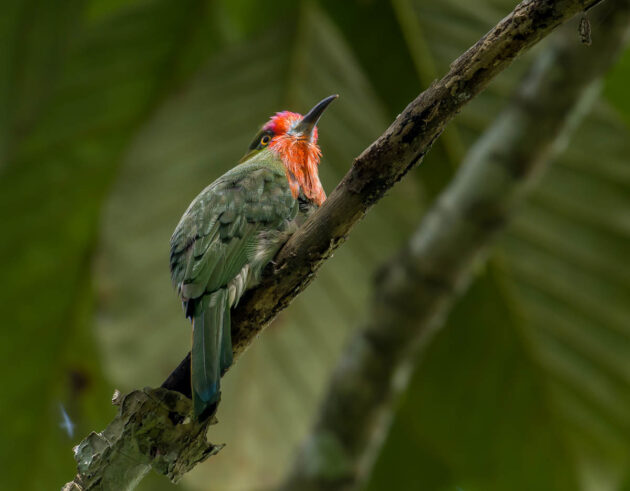
This bee-eater is another bird species with a somewhat underwhelming work ethic. A paper states that “Nyctyornis bee-eaters are sluggish during foraging, spending long periods of time on a look-out perch in the middle to upper canopy level and flying down to pick up arthropod prey when spotted”.
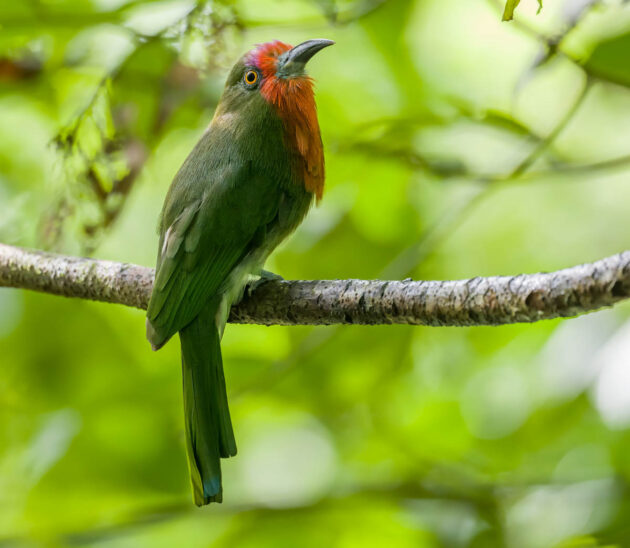
That paper also has some nice photos of the Red-bearded Bee-eater at the entrance of its nest burrow, feeding its chicks.
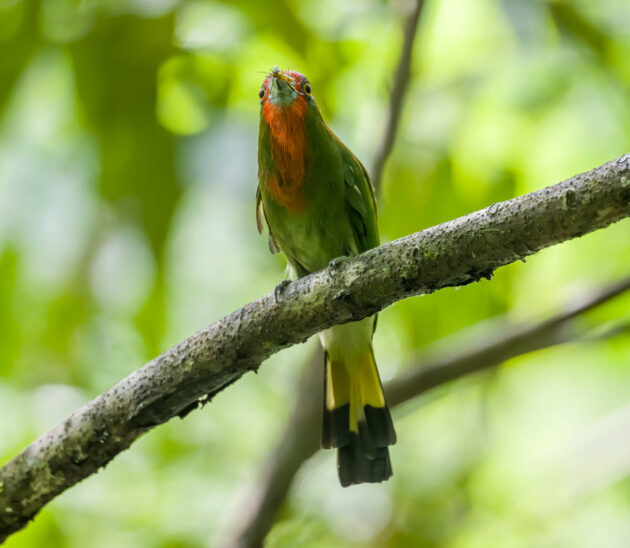
The Blue-throated Bee-eater is much smaller than its relative, and easier to see as it likes to hunt from open wires rather than inside the forest.
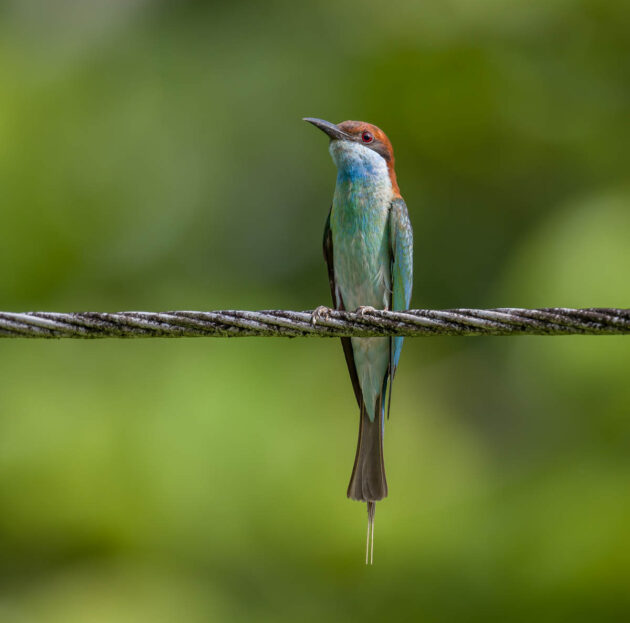
While about 72% of its chicks are sired by the nominal parents, about 7% are the result of intra-specific nest parasitism (i.e., an unrelated female dumps an egg into a nest), 7-12 % are the offspring of the paired male and an extra-pair female, and less than 5% are the offspring of the paired female and an extra-pair male (source).
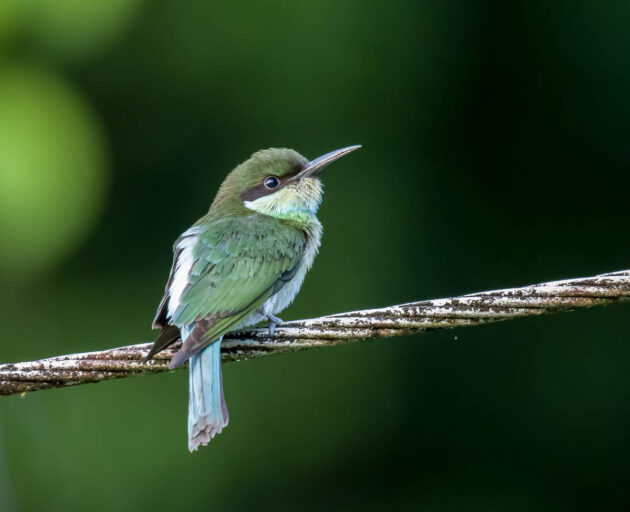
Still, the 28% of chicks not related to both parents may be one of the reasons for the relatively high level of infanticide among the chicks (eggs not laid by the paired female are more likely to be added at a later stage of the egglaying, as the female ejects all eggs put into the nest before she starts laying eggs herself). Thus the infanticide observed may be a protective measure to reduce intra-specific brood parasitism, particularly when the food supply is tight (source).
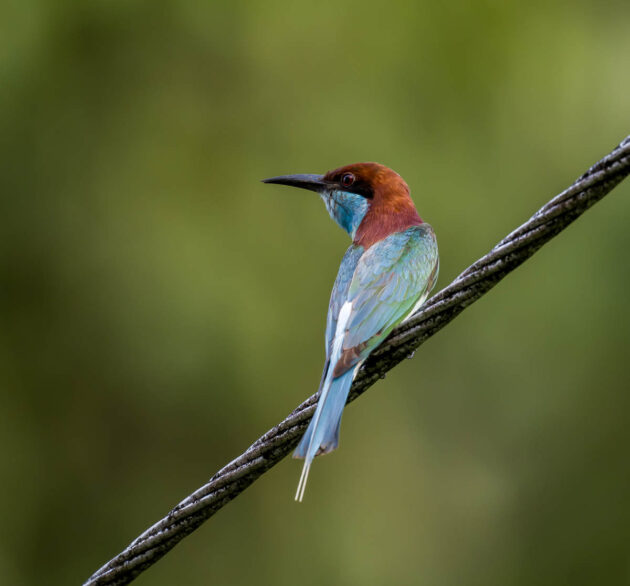
At Sepilok, it can be hard to avoid taking photos of some non-birds, such as primates. As you know, some primates face a number of court cases, both criminal and civil ones. Fortunately, the ones at Sepilok do not have these issues and look marginally more attractive as well.

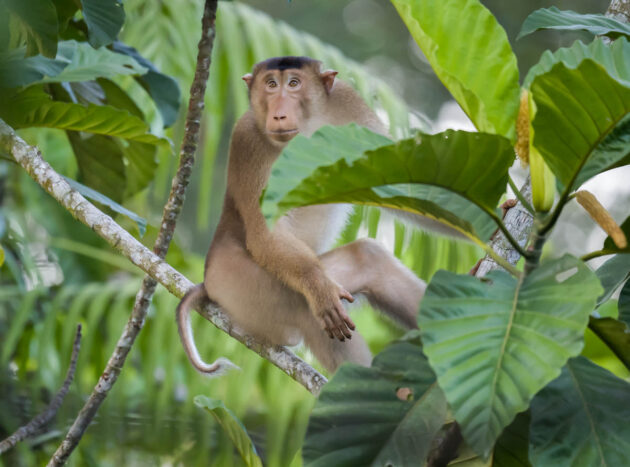
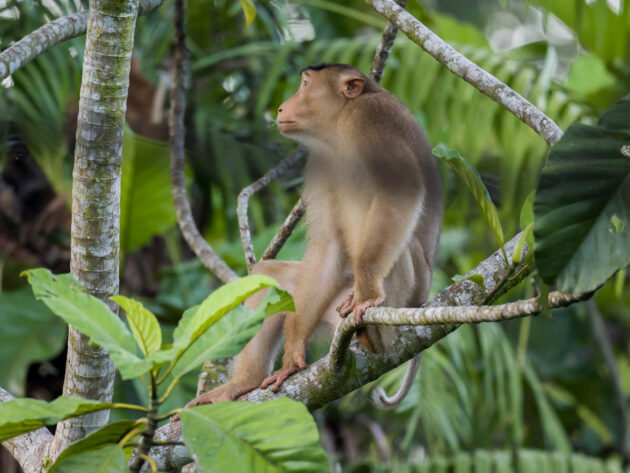














Another very entertaining and amusing post and such lovely photos too!
Thanks, Rebecca!
Very good photos, and an interesting and amusing read. I didn’t know that you took photos.
Thanks, Gordon – yes, I have been doing this for a while. There are about 200 more of my posts on this site, and I also have a dedicated website just with bird photos (www.birdphotos.smugmug.com)
Really enjoyed the magnificent photos and amusing asides. I’m on my way to Malaysian Borneo now. Stopping off at Kuala Selangor, have you been birding there?
Thanks, Mark! No, I am afraid I have not been to Kuala Selangor …